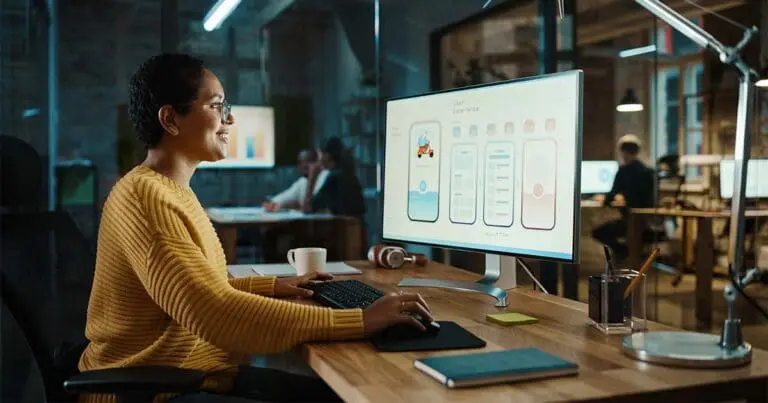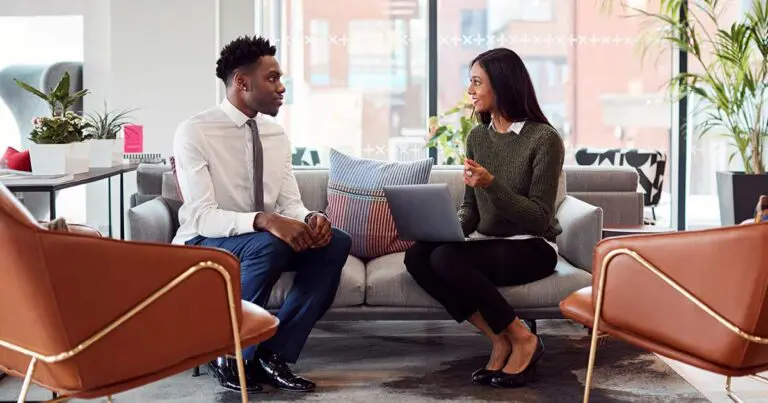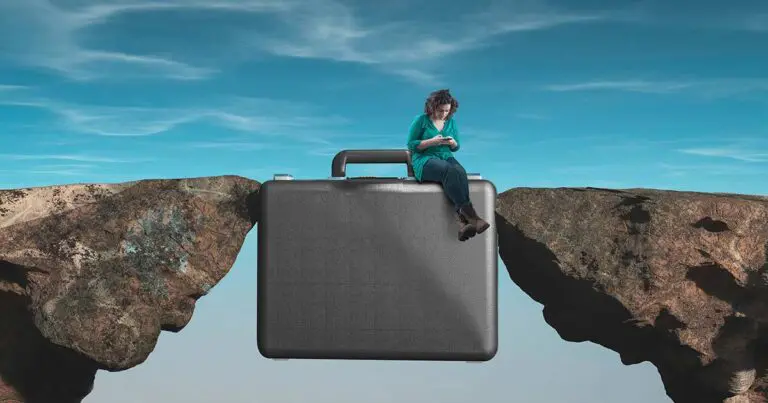How To Hire a UX Designer For Your Team

In today’s digital landscape, the importance of User Experience (UX) design cannot be overstated.
As companies strive to improve user satisfaction and enhance interaction with their digital products, the role of a skilled UX designer becomes critical.
This article will discuss how to identify and hire the right UX designer for your team, including the invaluable role staffing agencies can play in this process.
Through a combination of industry insights and practical advice, we aim to equip you with the tools necessary to make an informed hiring decision.
What is UX design?
User Experience Design, or UX design, is the process of creating products that deliver meaningful and relevant experiences to users.
This encompasses the design of the entire acquisition and integration process of the product, covering elements of branding, design, usability, and function.
By focusing on these aspects, effective UX design strives to boost customer satisfaction and loyalty through enhancing the usability, ease of use, and pleasure in the interaction between the user and the product.
As a result, UX design plays a pivotal role in shaping the customer’s overall experience and perception of a digital product.
The need for a professional UX designer
The need for a professional UX designer is illustrated by improved usability, interactive design, and visual design.
Improved usability
Professional expertise in UX is crucial for creating products that are not only functional but also user-friendly and intuitive.
A professional UX designer ensures that digital products are accessible and easy to navigate, which is essential for successful project outcomes and positive user feedback.
Their ability to anticipate user needs and design with empathy can significantly contribute to the overall success of a digital product.
Interactive design
Interaction design is a core component of UX that focuses on creating engaging interfaces with logical and thought-out behaviors and actions.
Professional UX designers are adept at crafting dynamic user interfaces that enhance user interactions and drive engagement.
Their expertise ensures that every touchpoint is designed with the user’s needs and preferences in mind, creating a seamless and enjoyable experience.
Visual design
Visual design is a critical aspect of UX, focusing on the aesthetics and visual appeal of digital products to ensure they are enticing and coherent with overall functionality and usability.
Professional UX designers skillfully balance a design’s visual elements with its operational aspects, ensuring that a product is not only visually attractive but also practical and user-friendly.
This balance is key to creating digital products that offer an engaging and intuitive user experience.
Qualities to look for in a UX designer
Qualities to look for in a UX designer include technical skills, soft skills, and experience.
UX designer technical skills
A competent UX designer should possess a strong set of technical skills, including expertise in wireframing, prototyping, and user research.
These skills are crucial for developing practical and attractive user interfaces that meet the specific needs of users.
Mastery in these technical areas enables user experience designers to effectively translate user needs and behaviors into engaging and intuitive digital experiences.
UX designer soft skills
In addition to technical prowess, soft skills like communication, empathy, and problem-solving are indispensable for UX designers.
Effective communication enables designers to convey complex ideas clearly within cross-functional teams and to stakeholders, while empathy helps in understanding the user’s perspective, crucial for usability testing.
Problem-solving skills allow for creative solutions to design challenges, ensuring the final product meets both user needs and business goals.
UX designer experience
Experience and a robust design portfolio are critical indicators of a competent UX designer.
Evaluating a designer’s past projects can provide insights into their design style and effectiveness, helping to gauge whether they are the right fit for your company’s specific project requirements.
This examination of their work can reveal not only their aesthetic capability but also their problem-solving prowess and user-centric focus.
Hiring a UX designer
Hiring a UX designer requires hiring managers to identify project needs, source UX designer candidates, evaluate UX design portfolios, and conduct interviews.
Identify project needs
Identifying the specific needs of your project is the first step in hiring the right UX designer.
This includes understanding the technical requirements, the design process, and the desired user journey.
A proficient product designer will seamlessly integrate these elements to create a compelling and functional digital experience.
Source UX designer candidates
You can find qualified UX designers through various channels such as freelance platforms, professional networks, and staffing agencies.
These sources provide access to a broad range of qualified designers, from junior designers to more experienced professionals.
Each offers a unique pool of talent, enabling you to find the perfect match for your project’s specific needs and goals.
Evaluate UX design portfolios
A designer’s portfolio is a window into their professional experience and skill set, revealing their ability to address and solve real-world user experience challenges.
Evaluating a portfolio allows you to assess the diversity of their projects, the industries they have worked in, and their proficiency with different design tools and design systems.
This critical examination provides insights into their creative process, problem-solving skills, and their adaptability to various design requirements and challenges.
Conduct interviews
Conducting thorough interviews with UX designer candidates is paramount in assessing their real-world experience, skills proficiency, and compatibility with your team’s culture and dynamics.
Designer interview questions should probe into how they’ve navigated practical design challenges, their approach to problem-solving, and their ability to collaborate and communicate effectively within a team setting.
This holistic view of their capabilities ensures you select a designer who meets the technical requirements and thrives in your organization’s unique environment.
The role of staffing agencies in hiring a UX designer
The role of staffing agencies in hiring a UX designer includes access to a vetted pool of UX talent, streamlined recruitment process, flexible hiring solutions, and specialization in tech and design.
Access to a vetted pool of UX talent
Staffing agencies streamline the hiring process by providing access to a pre-vetted pool of talent, ensuring that only the most skilled and professionally compatible candidates are presented for your project.
They meticulously vet designers to match your specific project needs and organizational culture, saving time and ensuring a higher quality of candidate selection.
Streamlined recruitment process
Staffing agencies can significantly streamline the recruitment process by handling everything from the initial screening to the final interviews, thus reducing the administrative burden on your company.
This allows your team to focus on their core functions while still ensuring access to top-tier UX design talent.
Flexible hiring solutions
Staffing agencies offer flexible hiring solutions, including contract, contract-to-hire, and direct hire options, to perfectly fit your project’s or organizational needs’ unique requirements.
This flexibility allows for effective utilization of hiring budgets and consideration of hourly rates to optimize resource allocation.
Specialization in tech and design
Choosing the right staffing agency—especially one that specializes in tech and design—can make a significant difference in the hiring process.
These agencies understand the specific nuances of hiring in these fields, including the importance of interaction designer experience and role-specific designers.
Working with your new UX designer
Working with your new UX designer involves onboarding, setting expectations, and fostering continuous collaboration.
Onboarding a UX designer
Effective onboarding practices ensure that new designers understand their roles and responsibilities and are integrated into the team with clear expectations.
This process sets the foundation for a collaborative and productive working relationship.
Setting expectations with your UX designer
Setting clear expectations and open lines of communication from the beginning is essential for fostering a successful collaboration between the designer and the organization.
It ensures that both parties are aligned on project goals, timelines, and feedback mechanisms, facilitating a productive working environment.
Fostering continuous collaboration with your UX Designer
Encouraging continuous collaboration and feedback loops between the designer and other team members fosters a dynamic work environment and leads to more successful project outcomes.
This approach ensures that designs remain user-centric and innovation thrives through collective creativity and diverse perspectives.
Hiring the best UX designer for your team
Choosing the right UX designer involves more than just assessing technical skills; it’s about finding a candidate who aligns seamlessly with your team’s culture and passionately shares your vision for the project.
Staffing agencies stand out as crucial partners in this endeavor, leveraging their expertise and networks to afford you access to a pool of exceptional talent tailor-fit for your needs.
By adhering to the outlined guidelines and contemplating the engagement of a staffing agency, you significantly bolster your prospects of securing the ideal UX designer who will contribute skillfully and enhance your team’s dynamic and project outcome.
This strategic approach ensures a harmonious collaboration poised to drive innovative solutions and project success.
Looking to hire top-tier Tech, Digital Marketing, or Creative Talent? We can help.
Every year, Mondo helps to fill over 2,000 open positions nationwide.
More Reading…
- Fostering a Listening Culture in Your Organization
- Machine Learning vs AI: Recruiting and Hiring the Right Talent
- How to Modernize Employee Recognition for the Digital Age
- AI Overwhelm & 3 Things You Can Do Now to Get Started
- The Rise of Autonomous Robotics, With Examples
- Breaking Down Silos: 11 Ways to Improve Interdepartmental Communication
- Leveraging AI for System Integration & the Demand for AI Talent
- Leading with Empathy: The Key to Effective Remote Leadership
- The Ripple Effects of Meta’s AI Hiring Blitz on the Tech Job Market
- AI You Didn’t Realize Your Organization Is Already Using
- Quantifying a Project Manager’s Success to Advocate for Hiring
- Breaking the Code: How Women are Shaping the Future of Cybersecurity
- Highest Paid Data Science Roles & Top Salaries



